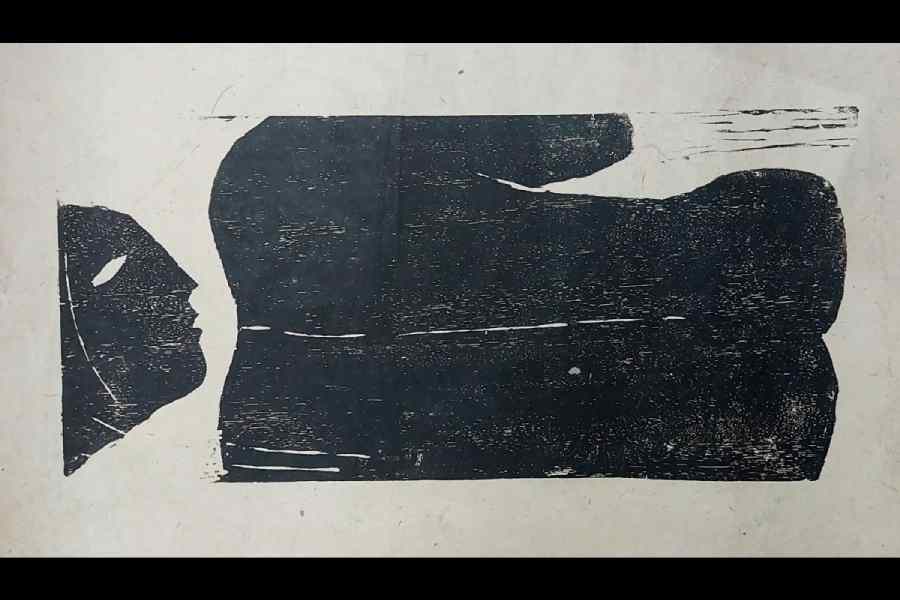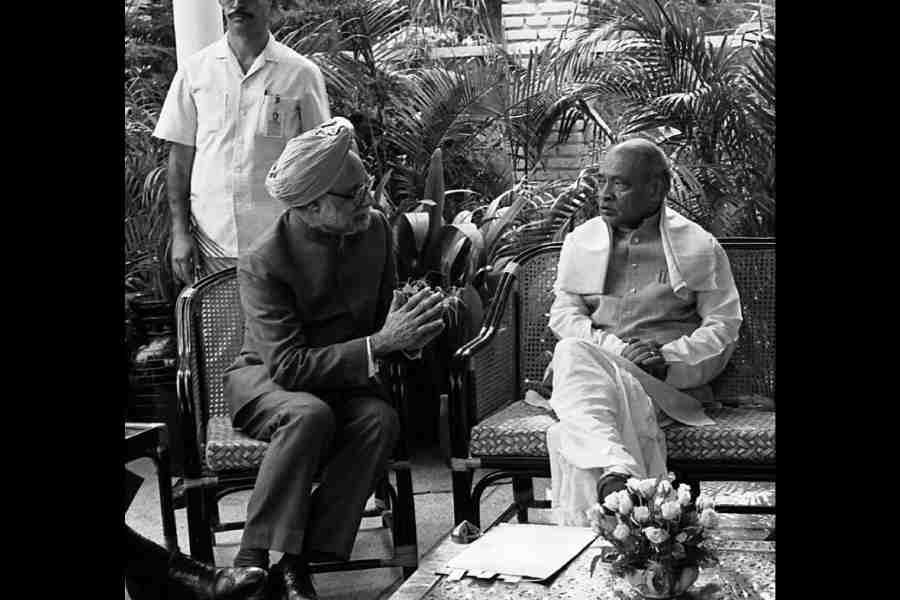The expectation that each artistic masterpiece should be a unique creation stems from the economic principle of demand and supply — the fewer copies an artwork has, the higher will be its price. Printmaking techniques of art defy this principle for several copies of the same piece can be churned out by artists who create these works by etching out images on hard surfaces or blocks and then transferring them onto paper using ink or paint. Printmaking, then, is a more accessible form of artwork that can be owned easily by the masses — take battala prints, for instance. Yet this also has an impact on the price and the value of such art pieces.
Not so in the case of consummate practitioners of the form like Haren Das. Works of this Bengal School master were displayed at an exhibition recently along with those of his student, Susanta Chakraborty, at the Sunayani Chitrasala of Charubasona Gallery. Mostly portraying vignettes of rural idyll, the genre that Das is most known for, the pieces in the show reiterated the mastery of this printmaker par excellence over his craft, draughtsmanship and the magic of chiaroscuro — a piece called Chiaroscuro is the perfect example of this (picture top) — in his works. The dexterously crafted equilibrium between black and white, the excellent use of negative space, and Das’s stunning eye for detail make these works engrossing.

Reclining Figure by Susanta Chakraborty [Source: Susanta Chakraborty]
His student’s approach to printmaking, in stark contrast to that of Das, is more modern and minimalist. Where Das dazzles the eye with details, Chakraborty’s figures depend on basic shapes to convey an impression that will perhaps vary with each viewer, as in Reclining Figure (picture, bottom). Some of Chakraborty’s pieces reveal his teacher’s knack for capturing the pulse of social interactions — Village Counsel is one example — and the interplay of light and dark, but his idiom is, understandably, more urban (Nut Seller, Vendor Boy). Chakraborty is also more concerned with the dark and light spaces within the mind. The series on Heads captures the turmoils and battles that rage within us. Chakraborty’s cubist vision is a perfect foil for Das’s nostalgic impressionism.










